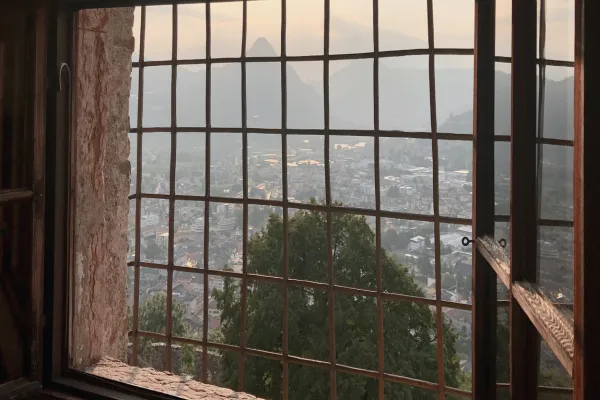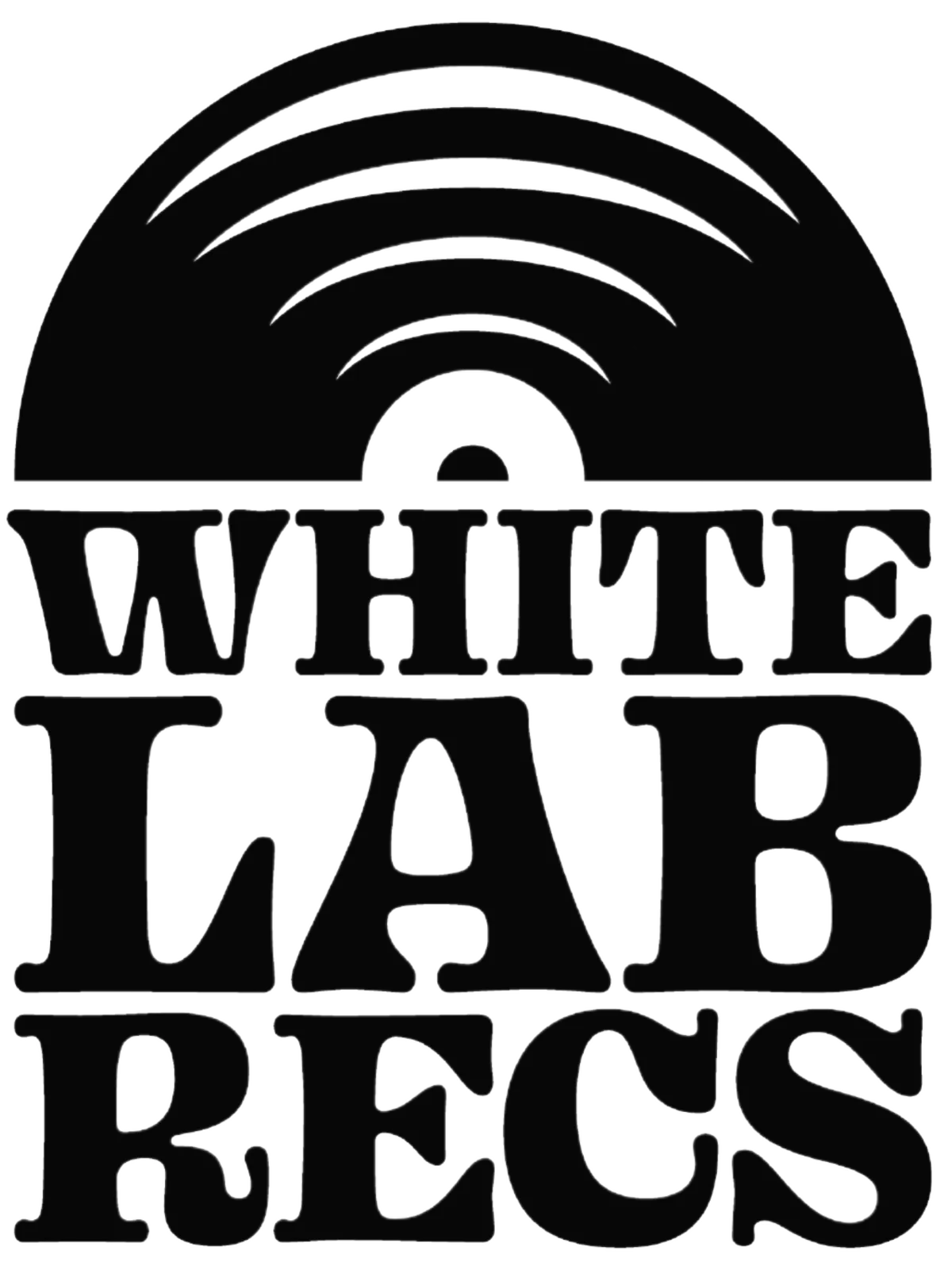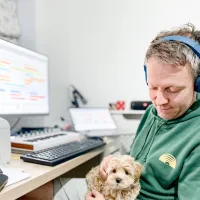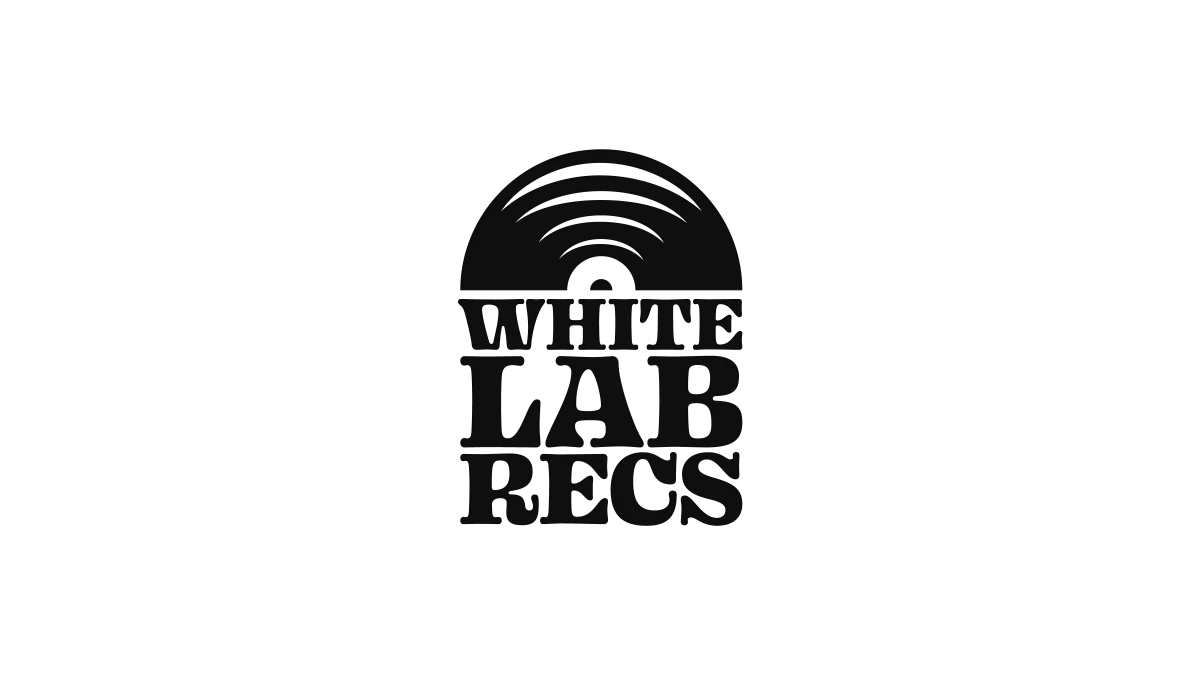Whitelabrecs Blog

Grounding Sounds: Polaroid Notes
I invited Polaroid Notes to put together a selection of his musical inspirations and he's presented a fascinating window into his taste and influences, with music from the last half a century. He walks us through punk and new wave, early electronica and dub obscurities, along with ambient, post rock and lounge sounds. Then with an extra jaw-dropping twist, and the reason I love this blog post format (in that it can be adapted to the ideas of the artist), he has taken photos of his own physical copy for each album!
Take a look at the collection below and you can hear more by either clicking on the image of the record, and/or by clicking the embedded Bandcamp player. If you're not familiar with the work of Polaroid Notes, you can check out his new album 'Quiet Notes' at the bottom of this blog!
"This is a list of 22 records that mean a lot to me and have shaped my interest in music, even though very few of them are related to Polaroid Notes. The list is in a sort of chronological order of how I came into contact with these records. The list could have been longer, but I have no intention of writing a book." ◼️Polaroid Notes
Kraftwerk – Autobahn (Philips Records, 1974)

That was my first record ever, I got it as a present from my older sister for my eleventh birthday in 1975. She can't remember why she bought this record for me of all things, but I'm grateful to her for introducing me to the world of strange and special music. I still feel at home there today and enjoy many new discoveries, regardless of whether they are electronic or handmade sounds. I probably don't need to add anything about Kraftwerk and their big influence on contemporary music. Their story should be well known.
The Stranglers – Black And White (Parlophone Records, 1978)

My favourite British Punk band in the 70s was The Stranglers. I probably played their album ‘Black & White’ a thousand times on my old hi-fi system, especially the song “Nice’N’Sleazy”. What a bass line and what a great song. I had no idea what they were singing about, but the bass.... At that time I thought if I will ever play in a band I would choose that instrument, which in fact I did almost ten years later.
PIL – Metal Box (Virgin Records, 1979)

I still love this album because it was so radical and different. I was never much into the Sex Pistols, but the dubby sounds, the ultra-deep bass and the razor-sharp guitar of Public Image Limited inspired me all the more. The record was originally released in a metal box in the shape of a film canister. Unfortunately, my box is now partially rusted, but that's the patina we all get.
At the end of the 80's I sometimes tried to play with my band the epic PIL track ‘Albatros’ as a cover version at gigs. Probably in a very idiosyncratic version and not with the perfect pitch, but it was the spirit that counted. I think I'm still a curious autodidact when it comes to playing instruments and exploring sounds and styles.
Young Marble Giants – Colossal Youth (Rough Trade, 1980)

Everyone loved YMG, this Welsh trio. So did I. The Moxham brothers and singer Alison Statton were different, their minimalistic sound was a sharp contrast to Punk Rock and New Wave music at that time. One album and two singles later they vanished and became legends. If you ever wanted a great example for focused, minimalistic and timeless music, here it is.
CHBB – 1 to 4 (Self Release, 1981)

Probably the biggest musical treasure I own: The four tapes by Chrislo Haas (ex DAF) and Beate Bartel (ex Mania D), each 10 minutes long and released in a limited edition of 50 copies in early 1981. They are probably worth a fortune among collectors today and have gone down in history as techno precursors with their hard analogue synthesiser and sequencer sounds. The punk wave had already swept over Germany at the time, and what remained, apart from the DIY thing, was the interest in trying out new, unheard things and taking the release of music into one's own hands. At that time I bought my first analogue synthesiser and started recording my first sound experiments at home on tape, much to the chagrin of the neighbours.
CHBB later became the short-lived Liaisons Dangereures (remember ‘Los Ninos del Parque’), also a story worth discovering. Interestingly, the music of CHBB was only recently re-released for the first time, including some outtakes.
Ike Yard – Selftitled (Factory US, 1982)

A legendary electronic no-wave band from New York. I bought this record after listening to it in the local record shop because I liked a couple of bands from Factory Records at the time. Ike Yard combined polyrythmic sounds from analogue synthesizers with a mood that seemed to have arisen from the dystopia of New York City in the 70s. In some ways comparable to the early work of Suicide. After their self-titled debut album, the band split-up shortly afterwards and only re-united in 2007. Fortunately, the record was re-released and further recordings from this period have recently appeared under the album title ‘1982’. Also worth discovering.
Cosmic Psychos – Down On The Farm (Mr. Spaceman Records, 1985)

The Punk Rock hell from Australia, politically incorrect to the max, they sang about beer, more beer, their bulldozers, having no money, various adversities of country life and could laugh heartily at their hillbilly-ness. We loved this trio in my circle of friends because of their into-the-face attitude. Later I got to know them personally at joint gigs. Unsurprisingly, what a bunch of nice people. Their first three records are timeless punk rock classics, later they became caricatures of themselves and their music. But they still seem to have a lot of fun doing it.
This Kind Of Punishment – A Beard Of Bees (Selfrelease, 1984)

In the second half of the 80s, New Zealand independent bands were all the rage for a while. They came out of an endemic music scene with many interesting artists centred around the Flying Nun and Expressway labels. One band in particular was TKOP, whose records were bursting with ideas ranging from classic elegiac piano ballads to guitar noise and unusual freaky sound experiments comparable to German Kraut electronic stuff. As inhomogeneous as this may sound, everything was extremely coherent, natural and timeless. ‘A Beard Of Bees’ is representative of the few releases they did between 1983 and 1987.
Souled American – Around The Horn (Rough Trade US, 1990)

This band from Chicago is another group where it's hard to name a favourite album, as all six ones released between 1988 and 1996 were brilliant. In my opinion, "Around The Horn" is probably the essence of all. Souled American played Alternative Country before the term even existed. Heartbreaking music with a fine sense for tradition, sometimes so slowed down, the drummer could take a nap during concerts. In their final phase, their music literally dissolved and Souled American became the pioneers of the sub-genre Cosmic Country, an ambient style that sounds like the atmospheric echo of American roots music, which I still enjoy listening to today and definitely has an big influence on my music due to its minimalism and focus on less is more.
Gram Parsons – Grevious Angels (Reprise, 1974)

At the beginning of the 90s, I was deeply interested in old Country Music and, to some extent, Bluegrass and Folk Music. At that time, I was writing for a few German music magazines and fanzines and got to know many musicians from Post and Grunge Rock bands of the US indie scene, who in turn were discovering their own roots and heritage. Strange as it may sound, but by delving into the musical roots of other nations, my interest in my own was revitalised and strengthened, e.g. old German Kraut Electronic stuff from the 70s. I still own a lot of old and contemporary Country Music records, my absolute favourite is Gram Parsons, who sadly died of drug and alcohol abuse in 1973 at the age of 26. ‘Grevious Angels’ was released posthumously after his death. For me, the album is exemplary of everything Gram Parsons released solo, together with Emmylou Harris or with his band The Flying Burrito Brothers in his short life. Music that makes you cry tears in your beer and to hold dear the ones you love.
Cluster & Eno – Selftitled (Sky Records, 1977)

In my opinion, a milestone in Ambient and Electronic music from the fruitful collaboration between German Kraut electronic pioneers Cluster and ambient mastermind Brian Eno. This album is the best proof that Ambient Music can go far beyond lengthy drones, keyboard clutter and boring nature sounds, creating diverse and exciting textures and atmospheres. A must-have in every record collection, and certainly not without influence on my own music. I discovered this record probably years too late.
Slint – Spiderland (Touch & Go Records, 1991)

An epochal Post-Rock album that inspired hordes of imitators. Beginning of the 90ies, Slint from Louisville/Kentucky were an unknown planet in the US Indie Rock universe with "Spiderland" as the holy grail of future rock music. The six tracks contain the perfect synthesis of ultra-quiet songwriting and untamed noise explosions. Consequently, nothing more relevant came from Slint after that, which deeply consolidated their hero status. Members of Slint later founded The Palace Brothers and The For Carnation, maybe some of you might know them.
Labradford – Mi Media Naranja (Kranky, 1997)

This US band was one of my deeper approaches to Ambient Music. These guys from Richmond combined minimalist chamber and contemporary classical music with slow-motion soundscapes. At the time, I was living with my family in the countryside in a very small village of about twenty houses. I often listened to this record and its untitled predecessor late at night when everyone else was asleep. As we lived in an area without any light pollution, you could see millions of stars and sometimes even the Milky Way. A great experience that led to me preferring to record my music at night ever since. All releases of Labradford are highly recommended.
Air – Moon Safari (Source, 1998)

Another record that I have listened to countless times and which still exudes a timeless chic more than 25 years after its release. With ‘Moon Safari’, the French duo succeeded in creating a classic album, combining ambient, downbeat chill lounge sounds with sophisticated psychedelic space pop. Listen to ‘La Femme D'Argent’, ‘Sexy Boy’ or ‘Talisman’ and the sun will rise and never go down again.
Marc Hollis – Untitled (Polydor Records, 1998)

I re-discovered the only solo album by the former Talk Talk singer a couple of times. What an incredible album! Released in 1998 and not really a commercial success, this record is, in my opinion, outstanding in terms of introspection, cocooning and self-determination. This album can be your best friend in dark days, it's uplifting, touching and devotional. It literally forces you to immerse yourself in the music and do nothing else. I would be lying if I didn't admit that this album was an inspiration for ‘Quiet Rooms’.
Pole – 1 2 3 (Kiff, 1998 – 2000)

One concept in form of three albums: Pole aka Stefan Betke from Berlin, who created an exciting, crackling minimal dub manifesto based on a defective analogue Waldorf 4-Pole filter. What do we learn from Pole: Noises can be danceable. This trilogy will always remain something special for me because of its radical approach and its big influence on avantgarde electronic music.
LCD Soundsystem – Sound Of Silver (DFA Records, 2007)

Ever since I heard their track ‘Daft Punk Is Playing At My House’ in 2005, I've been fascinated by this band. Consequently, I own all their albums, difficult to single out one in particular, perhaps it's ‘Sound Of Silver’, because that was also the first time I saw LCD Soundsystem live and was very impressed by their untamed energy on stage. Ever since I saw ‘White Noise’ in the cinema at the end of 2022 and discovered a new song by the band in an awesome supermarket dance scene at the end of the movie, I've been hoping that there will be a new album at some point.
Portishead – Third (Island Records, 2008)

Their first album ‘Dummy’ from 1994 was a real revelation with its melancholic slow-motion sound. But to be honest, the band from Bristol really grew on me with their third album, which was much more experimental and varied. Co-founder Geoff Barlow once said: ‘The basic thing was to sound like ourselves, not to repeat ourselves’ - a phrase that you can't repeat to yourself often enough. A small note: Singer Beth Gibbons' superb solo album “Lives Outgrown”, released in 2024, is also worth discovering.
Loscil – Endless Falls (Kranky, 2010)

I've been a fan of Loscil since the first album ‘Triple Point’ on Kranky in 2001. I think Scott Morgan’s minimalist ambient sounds together with my growing interest in old German Kraut Electronic music and Dub Techno acts since the 90s finally led me in this direction. It took me until 2012 to form my project Kraut Sounds, but that was fine and probably necessary to focus on my own experimental soundscapes. I own almost all of Loscil's releases. If I had to name a favourite album, it would be ‘Endless Falls’, because I've definitely listened to it the most.
Kammerflimmer Kollektief – Wildling (Staubgold, 2010)

This German trio is difficult to describe or categorise. Their first records in the 90ies were looped bursts of sound that made you fear for the health of your own record player. Later, Kammerflimmer Kollektief developed into a fine work of sound art, somewhere between Ambient, New Jazz, improvisation and Kraut elements. Again, it's difficult to name a favourite album from her catalogue of releases, so I'll pick their 2010 album ‘Wildling’, which contains the 14-minute epic track ‘In Transition’, which I could listen to on an endless loop.
Various Artists – Echogarden Compilation Vol. 1 (Echogarden, 2013)

Probably not the most historically important Dub Techno album, but a personal milestone that I like to remember. I started releasing the first tracks of my electronic project Kraut Sounds in 2012 and quickly came into contact with the local and later the international underground Dub Techno scene. Some long-lasting friendships have resulted from this. The Echogarden compilation series, a radio show and podcast of the same name which was run by a few enthusiasts, reflected the sound of the time. The fact that a track from Kraut Sounds was chosen for the first sampler made me incredibly happy.
Gallowglas - I Dream I See You Hit The Water, I Dream I See You Change Your Mind (Lost Tribe Sound, 2021)

I can't remember when I first became aware of Euan Alexander Millar-McMeeken, it was probably when the first Graveyard Tapes album ‘Our Sound Is Our Wound’ was released in 2013. I really liked this contemporary classical sound with its experimental approach and accentuated piano sounds - it was something that was still dormant in Polaroid Notes at the time and only slowly come to light. After Graveyard Tapes, I looked forward to every new release from Euan, be it with Glacis, solo or his various collaborative projects. If I had to pick a favourite from his releases, I'd go with Gallowglas' debut album, which for me is the perfect symbiosis ofmodern classical, experimental sounds, deep despair and incredible beauty. Interestingly, I got to know Euan personally through Whitelabrecs when he wrote a very nice comment on Bandcamp about my album ‘Cloud Anthems’. Since then we've been in contact, exchanging ideas.
You can find out more about Polaroid Notes' music at the following links:
Bandcamp
Soundcloud
Facebook
If you enjoyed reading and listening to this blog post, you might enjoy Polaroid Notes' own album 'Quiet Rooms', which you can check out HERE or by clicking the play button below.
join the community...
get a free 12 track compilation album
be the first to hear the label news
get behind the scenes exclusives
a chance to get involved



